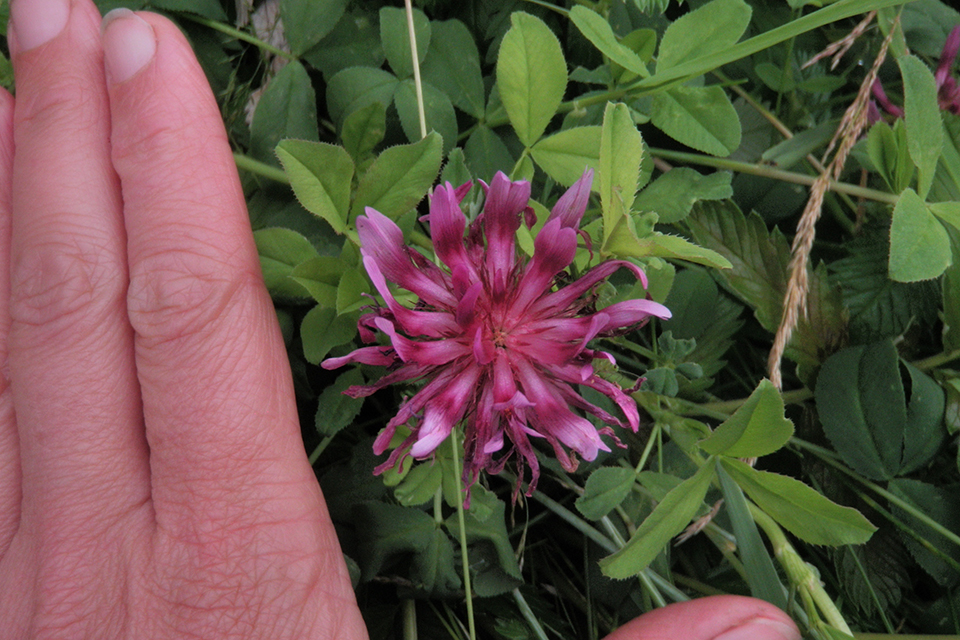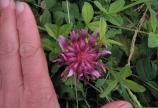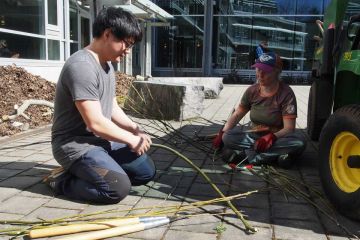Ethnobotany class revives a tiny but significant plant on campus
- Anne MacLaurin

Experts tell us the path to mental wellness is leaving behind our devices and enjoying the outdoors, especially the greenery. Once spring arrives, take a moment to appreciate the diversity of trees and other plant life on campus. There’s more here than you might think.
“We’re fortunate to have a campus with so many native plants,” says ethnobotany PhD candidate Fiona Hamersley Chambers, pointing to Garry oak and historic camas meadows, Oregon grape, salal, grand fir, Douglas fir, black cottonwood and especially springbank clover—a food that was traditionally cultivated by First Peoples.
Following in the footsteps of world-renowned ethnobotanist Nancy Turner, Hamersley Chambers has led environmental studies students across the campus since 1999, using it as a living classroom as they study the relationship between people and plants.
Springbank clover was originally cultivated by Indigenous peoples near and around Clover Point before the arrival of James Douglas in 1842. Since that time, Clover Point has undergone many land use changes and none of the original springbank clover remains on the site.
In their class, students learn how to cultivate the clover following Indigenous practices of weeding, harvesting and tilling. The clover roots are a rich carbohydrate source with a sweet pea sprout taste. Indigenous peoples would use the root in their cooking, along with other root crops like silverweed and rice root, and berries like salal and red huckleberry, which are still found on campus.
Hamersley Chambers shows her students how to prepare, plant and tend a plot of newly planted springbank clover at the side of UVic’s First People’s House.
“UVic—especially Lalita Kines at the First People’s House and Bentley Sly in facilities management—has supported my class project by providing the space to plant the clover as well as tarps, mulch and a fence to keep the deer out,” she says. The students learn about the different types of clover (introduced European varieties and springbank) and apply this new knowledge and hands-on experience to the practices of stewardship, reciprocity and reconciliation.
Learning about the relationships between plants and people is something that must become more prevalent in our modern lifestyles if we’re to have healthy and reciprocal relationships with the environment.
—Undergraduate student Maasa Lubus
The course has been taught at UVic for 27 years, with Hamersley Chambers leading it for the last seven. She’s excited at how receptive UVic is to expanding garden plots and hopes this is just the start of introducing other root crops such as silverweed and rice root to campus.
“As a farmer, I believe in a reciprocal relationship with the land,” she says. “If we take what we need in a respectful and knowledgeable way, in return the land produces more.”
Photos
In this story
Keywords: plants, graduate research, environmental studies, biodiversity, ethnobotany, Indigenous, student life
People: Fiona Hamersley Chambers
Publication: The Ring





